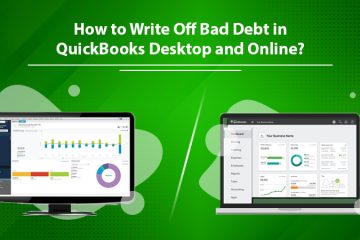How to Create a New QuickBooks Company File From an Existing One?

 Are you trying your luck to create a new company file on QuickBooks? That’s not a difficult task anymore. You can create a new QuickBooks company file from an existing one without having to kick-start from the scratch. Instead, you can use the copy, user accounts, customer lists, vendor lists, templates, and preferences from an existing company file to get a leading jump start.
Are you trying your luck to create a new company file on QuickBooks? That’s not a difficult task anymore. You can create a new QuickBooks company file from an existing one without having to kick-start from the scratch. Instead, you can use the copy, user accounts, customer lists, vendor lists, templates, and preferences from an existing company file to get a leading jump start.
Whether you are new to QuickBooks or have been familiar with this premier accounting software for quite a while, this guide serves for both. We have covered the comprehensive ways to create a new QB company file from an existing one. In case your face trouble at any point in time, don’t hesitate to contact QuickBooks support.
Before that give the following instructions a try…
Don’t forget to read these pro tips for a quick solution
- For QuickBooks Desktop Payroll, Direct Deposit, E-file, E-pay, ensure the subscription has been activated for only one company.
- If you have payroll data for the existing year, then QuickBooks might not be able to remove all the transactions.
- If you are finding any trouble to create a new file from the existing file, then deal with that error first and then proceed further.
- Don’t start working on QuickBooks without any knowledge about a particular subject.
Create a New QuickBooks Company File From an Existing One
Step 1: Backup your company file before creating a copy
- Open QuickBooks.
- Go to the File tab, choose Switch to Single-user mode.
- Again click the File tab, move your cursor over Backup Company and click over Create Local Backup.
- Select Local Backup and click Next.
- Under the Local Backup section, click Browse and then choose the place to save the backup company file.
- Click Ok, click Saveit now and click Next.
Now your company files are secured and you can safely create a copy of the existing company file.
Step 2: Create a copy of the existing QuickBooks company file
- Launch QuickBooks Desktop and open the company file that needs to be copied.
- The Product Information window opens, click F2 on the keyboard.
- Now you will see the company file under the File Information
- Further, leverage the backup to restore the company file.
- You can rename the restored file to and save the file to a new folder and rename it as well.
Step 3: Delete the transactions from the copied company file
The QuickBooks company file backup you have just restored creates a new company file with the same accounts, lists, templates, and preferences. For a quick head start, you should remove the files from the copied company files. Here is how!
- Firstly, open the new company file.
- Click the File tab, click Utilities.
- Now choose Condense Data. Click Yes on a notification message that says remove budget data.
- The Condense Data window opens, click All Transactions and click Next.
- Keep following the on-screen instructions and take the final remaining steps to delete the copied transactions.
Step 4: Verify the accounts and manually remove the transactions
Once you complete the above steps the transactions should be removed, however, there are a few instances where you need to manually do it.
- Navigate to the Reports section and click Reports Center.
- Now choose the Accounts and Taxes menu, click Transaction List by Date
- Manually set the date range starting before the oldest transaction you have copied.
- If you found any transaction in the list, then manually remove it.
Facing trouble creating a new QuickBooks company file? Here are we to assist
Have a quick look at the below instructions that we have used to create a new QuickBooks company file.
- Backup your company file before creating a copy.
- Create a copy of the existing QuickBooks company file.
- Delete the transactions from the copied company file.
- Verify the accounts and manually remove the transactions.
Have you followed the above instructions, but can’t create a new QuickBooks company file from an existing one? Don’t you worry about it! We have been using QuickBooks professionally and keep managing the issues for ourselves and our clients as well. Just give us a call on our QuickBooks customer service, take the suggestions from experts and implement them to create a QuickBooks company file.


